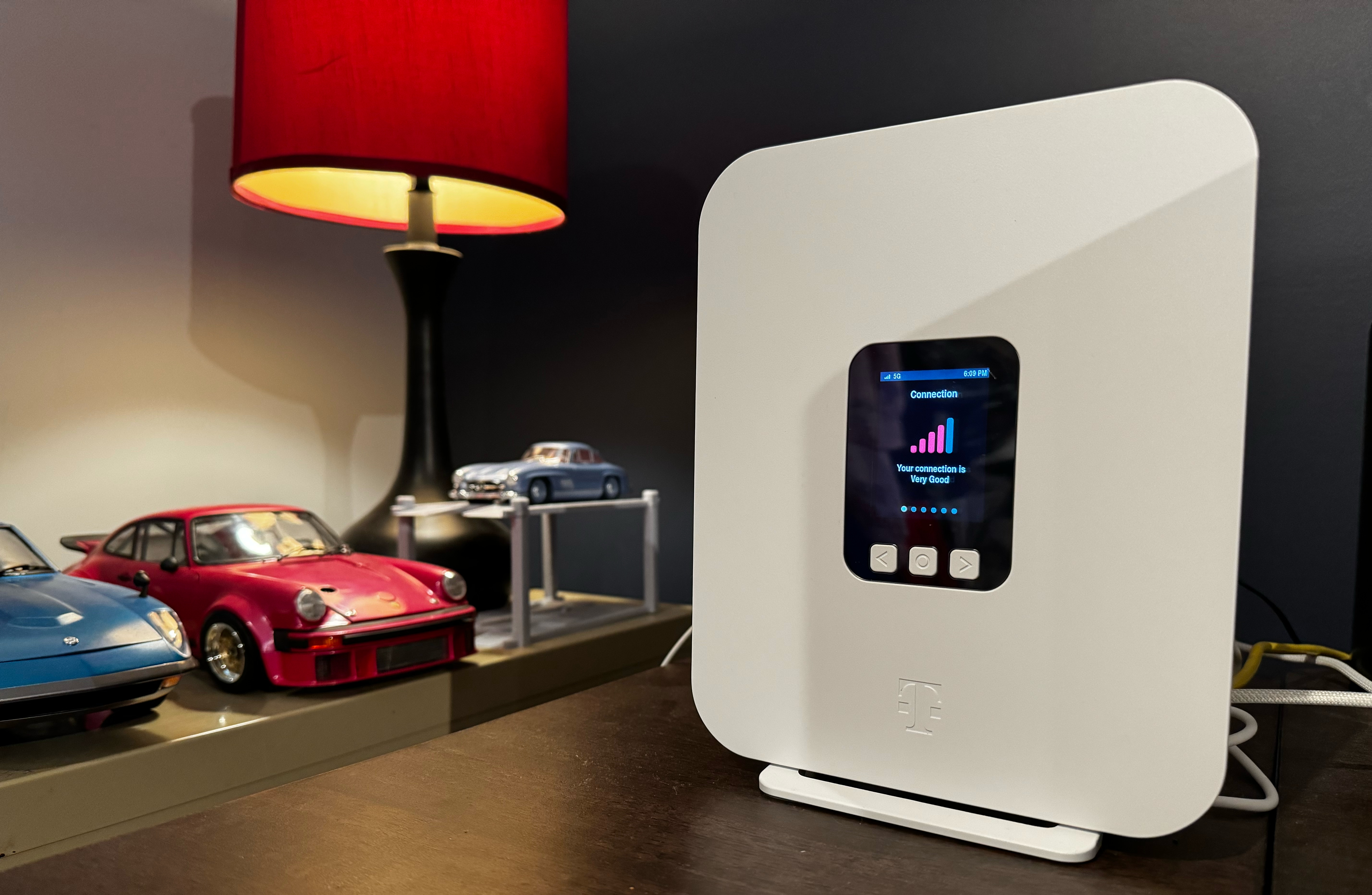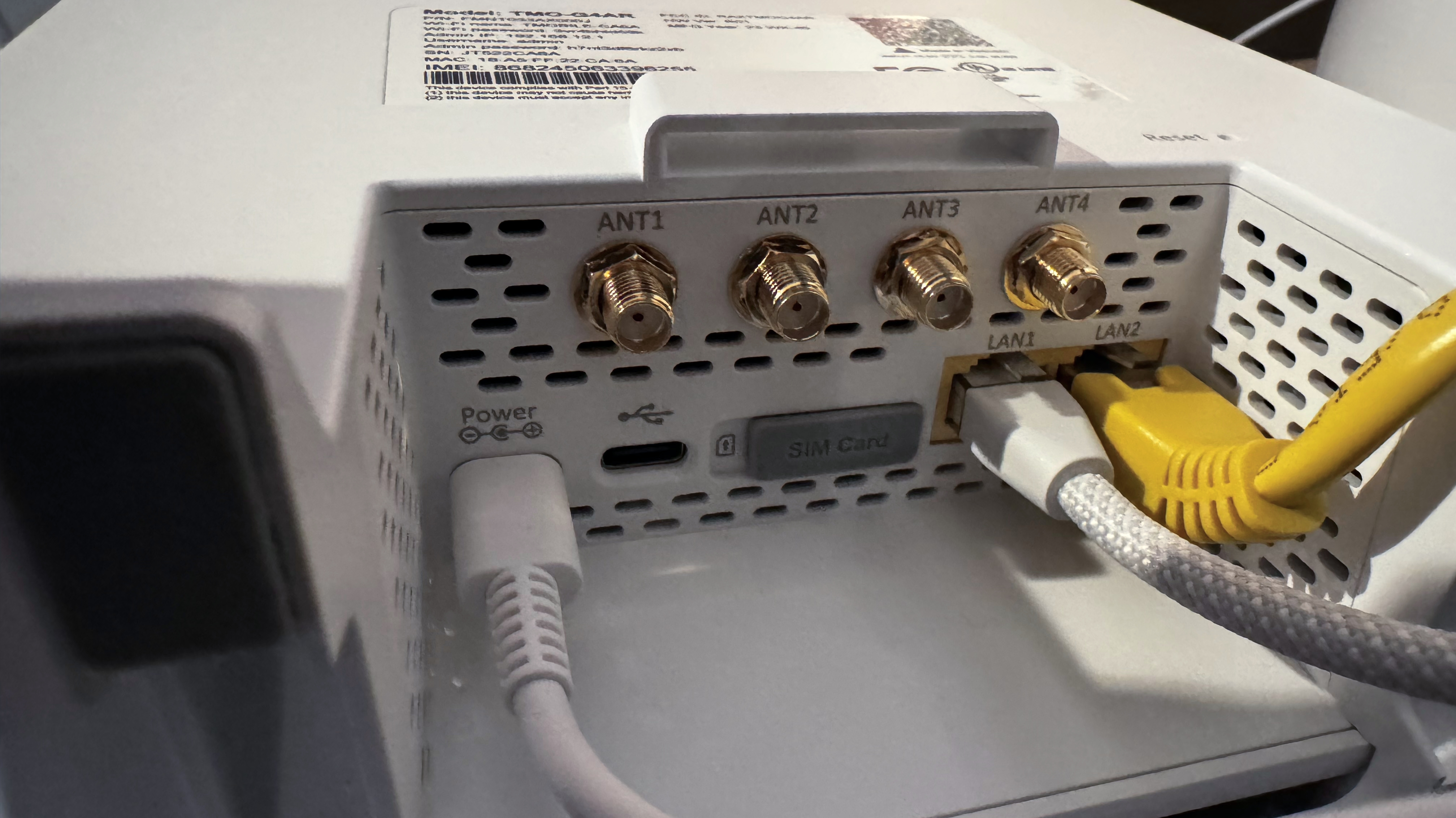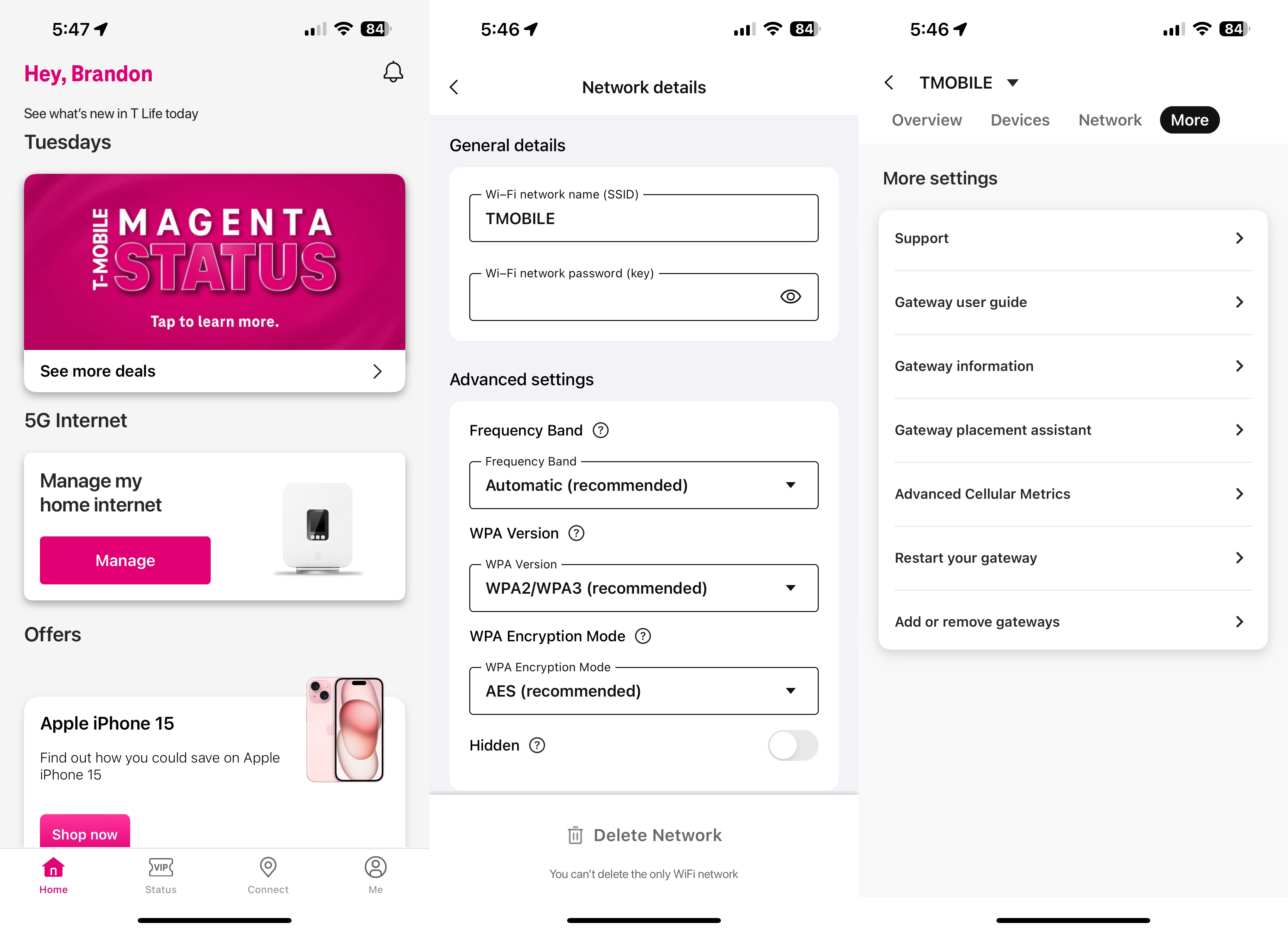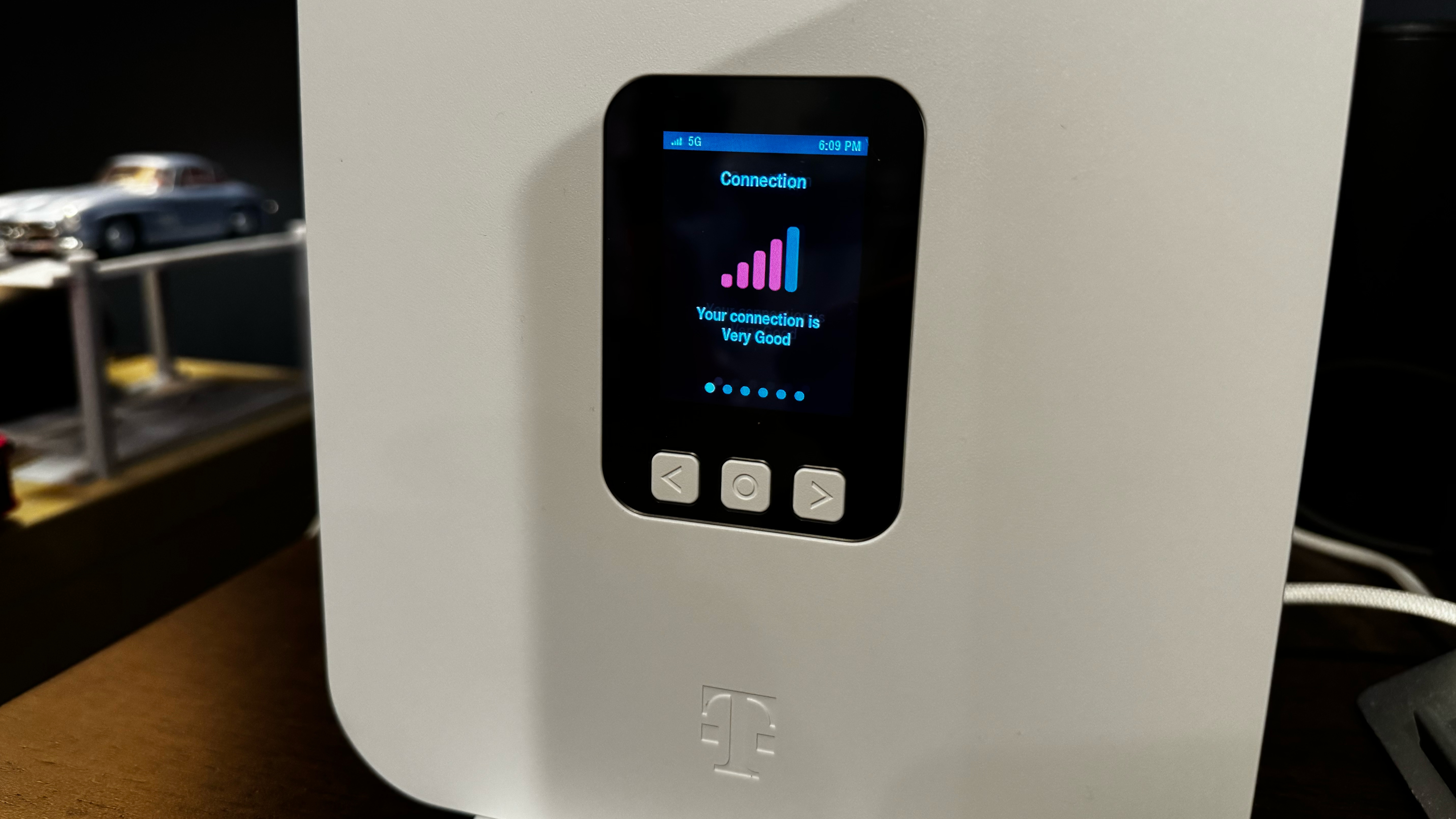It’s been nearly two years since I wrote a three-part series on my experiences with T-Mobile Home Internet. Myfirst encounterwith the service was pleasant enough, as I experienced download speeds of 472 Mbps and upload speeds of 71.9 Mbps. While the downloads were comparable to what I saw with my Spectrum 400/20 cable internet plan, the upload speeds were roughly three times as fast. Better yet, the cost of admission was just $50 per month compared to the $65 per month I was paying for Spectrum internet.
However, thingsquickly went southtwo weeks after I initially activated my T-Mobile Home Internet service. I started receiving connection errors, which resulted in losing complete internet connectivity. After two days of no internet and no help from T-Mobile customer service, I crawled back to Spectrum internet, and have been with the service ever since. However, my brief encounter with T-Mobile Home Internetunearthed serious problemswith the wireless service, T-Mobile’s inability to deal with capacity issues, and customer service representatives that would lie to customers to get them off the phone or kick the can down the road regarding connectivity woes.

Considering significant time has passed since I said goodbye to T-Mobile Home Internet, I decided that now was a good time to revisit the service and see if things have improved.
Returning to T-Mobile Home Internet
Prior to and after my two-week stint with T-Mobile Home Internet, I’ve been using Spectrum’s 400/20 internet plan. The service works fine, and outages are minimal. I can probably count on a single hand how many times I’ve had a significant outage in the past five years. But in the back of my mind, I still couldn’t get past paying $65 a month for 20 Mbps upload speeds.
Last month, I saw a banner ad for T-Mobile Home Internet, which offered a $200 prepaid Mastercard promotion when signing up for its service. Being the cheapskate that I am, the $200 bonus coupled with the still low price of $50 per month with autopay made me decide to give the service another chance…for science. Sidenote: The $50 price is only achieved when you use autopay with a bank draft; otherwise, you pay $55 per month with autopay and a credit card.

Like before, signing up for the service was as easy as logging into my existing T-Mobile account, verifying that I couldreceive 5G coverageat home, entering my socialsecuritynumber (for a credit check), and confirming my payment details. I placed the order for the service on a Wednesday afternoon, and the welcome package with a 5G gateway arrived on Friday afternoon.
Setting up T-Mobile Home Internet
The old circular 5G gateway that I received in July 2022 is no longer in use. In its place, I received a Sercomm TMO-G4AR that T-Mobile now sends to new customers. The modem/router is a rectangular tower finished in flat white plastic. It has internal antennas for connecting to T-Mobile’s 5G/LTE network. However, there are also connectors forattaching an external antennaif you have poor reception.
Get Tom’s Hardware’s best news and in-depth reviews, straight to your inbox.

There are also two USB-C ports (one of which powers the unit), a SIM card slot, and two GbE ports. I wish there were at least four GbE ports, but I can live with just two.
Getting on the T-Mobile network is as simple as installing the T-Mobile Home Internet (or T-Life) app, scanning the QR code on the back of the device, and following the on-screen prompts. Even though the app told me to set the 5G gateway near a window, I placed it on my desk (where my old Motorola cable modem and Wi-Fi router were positioned) and received four signal bars (out of five).

To expedite the setup process for my plethora of wireless devices (I have over three dozen Wi-Fi devices in my home), I just reused the SSID from my existing wireless router and I was up and running.
The TMO-G4AR functions as a basic Wi-Fi 6 router, which had no trouble covering my two-story home and even outside. However, the big downside to using T-Mobile’s router is that it requires the use of an app to configure the router, and the options available are slim to none. You can change the SSID, network password, and specify frequency bands, but that’s about it. This is geared more toward people who want to set up the router and forget about it, so the in-depth customization that we see with thebest Wi-Fi routersis not applicable.

T-Mobile Home Internet Performance
I’ve been using T-Mobile Home Internet with the TMO-G4AR for over a month now. During that billing cycle (March 22 through April 21), I’ve maintained a consistent four bars for signal strength and haven’t experienced any service dropouts. I also haven’t needed to reboot the device for any reason during that time.
Although T-Mobile bills its service as offering “unlimited” internet, the company says that your service may be subject to lower speeds due to data prioritization routines currently in place:

As of May 27, 2025, new T-Mobile Home Internet customers using more than 1.2TB of data in a billing cycle are also considered Heavy Data Users. The threshold number is periodically evaluated across our rate plans and brands to manage network traffic and deliver a good experience to all customers while offering a range of customer choices. you may always check the threshold amount for a rate plan by speaking with a representative, review our rate cards or T-Mobile.com, or by logging in to my.t-mobile.com, or the T-Mobile app.
Even though I used over 1.5TB of data during my first billing cycle, I never noticed any drops in download speeds while using the service. However, I do notice that my upload speeds vary widely depending on the time of the day. As you can see from these SpeedTest results using the app on my Mac, I’m getting downloads in the mid-600 Mbps range—and this is any time during the day. Uploads, however, range from 40 to 60 Mbps.

I haven’t changed my internet usage habits since switching from Spectrum back to T-Mobile Home Internet. That means multiple personal smartphones, tablets, laptops, and desktops are connected. That’s not to mention several test rigs that are always running and TVs that are streaming everything from Sling TV to Disney Plus toAmazonVideo. In other words, I just use the service, and it works without issue, which is something I couldn’t truly say after my first two-week stint nearly two years ago.
Final Thoughts
After my nightmare of trying the T-Mobile Home Internet service in 2022, I had no intention of going back to the service. On a whim, I decided to give it another shot and I’ve been impressed by the promise of 5G home internet service. For an entire month, it has been rock solid day in and day out, and just as reliable as my Spectrum internet service. And the cost savings do add up, compared to what I was paying with Spectrum. A $15 savings per month translates into an extra $180 in my bank account. Throw in the $200 prepaid Mastercard that I’ll receive from T-Mobile, and I’d chalk this up as a win, so far.
However, my new “winning” streak with T-Mobile doesn’t discount the troubles I had in the past or troubles that other people had (or continue to have) with the service. Perhaps T-Mobile has upped its capacity to deal with an influx of customers. Maybe its customer support team has improved how it handles customers who call in with problems.
It’s also likely the current generation of 5G gateways is more reliable, thus ensuring that customers have a better internet experience. Or maybe, I just got lucky this time? Who knows for sure, but I’ll just ride this 5G home internet train as long as I can and hope that the experience stays enjoyable.
Brandon Hill is a senior editor at Tom’s Hardware. He has written about PC and Mac tech since the late 1990s with bylines at AnandTech, DailyTech, and Hot Hardware. When he is not consuming copious amounts of tech news, he can be found enjoying the NC mountains or the beach with his wife and two sons.